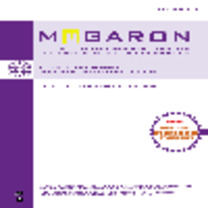Mekan ve Zaman Kullanım Davranışlarının Gençlerin Medeni Olmayan Davranışları Deneyimlemesindeki Rolü
The Role of Space and Time Use Behaviors in Shaping the Incivility Experience of Young People
___
- Bayer, Y. (2007, November 27). “Sakarya Caddesi haydut yatağı oldu.” Hürriyet. [On-line] Available:
- Blöbaum, A. & Hunecke, M. (2005). “Perceived danger in urban space: The impacts of physical features and personal factors.” Environment and Behavior, 37 (4), 465-486.
- Ceccato, V. & Uittenbogaard, A. C. (2014). “Space-time dynamics of crime in transport nodes.” Annals of the Association of American Geographers, 104 (1), 131-150.
- Cops, D. (2013). “The role of autonomous mobility in public space on fear of crime among adolescents.” Journal of Youth Studies, 16 (8), 1105-1122.
- Çolpa, Z. M. (2015). Convivial urban spaces: The case of Sakarya Street, Ankara. (Unpublished Master Thesis). Ankara: METU. Eldridge, A. (2010). “Public panics: Problematic bodies in social space.” Emotion, Space and Society, 3, 40-44.
- Erkip, F. (2003). “The shopping mall as an emergent public space in Turkey.” Environment and Planning A, 35, 1073-1093.
- Erkip, F. & Mugan, G. (2007). “The analysis of time-space interaction as a subjective measure of time-use: A case study in Ankara, Turkey.”, paper presented at the IATUR Conference, Washington, DC, October 17-19.
- Fyfe, N., Bannister, J. & Kearns, A. (2006). “(In)civility and the city.” Urban Studies, 43 (5/6), 853-861.
- Held, N. (2015). “Comfortable and safe spaces? Gender, sexuality and ‘race’ in night-time leisure spaces.” Emotion, Space and Society, 14, 33-42.
- Hendry, L. B., Shucksmith, J., Love, J. G. & Glendinning, A. (1993). Young people’s leisure and lifestyles. London: Routledge.
- Jackson, P. (1998). “Domesticating the street: the contested spaces of the high street and the mall.” In N. Fyfe, (Ed.) Images of the street: Representation, experience and control in public space. (pp. 176-191) London: Routledge.
- Konrad Adenauer Foundation (1999). Turkish youth 98: The silent majority highlighted. İstanbul: İstanbul Mülkiyeliler Foundation Social Research Center (İMV-SAM).
- Lieberg, M. (1994). “Appropriating the city: Teenagers’ use of public space.” In S. J. Niery, M. S. Symes & F. E. Brown (Eds.) The urban experience: A people-environment perspective (pp. 321-333) London: E & FN Spon.
- Loader, I., Girling, E. & Sparks, R. (1998). “Narratives of decline: Youth, dis/order and community in an English ‘middletown’.” British Journal of Criminology, 38 (3), 388-403.
- Malone, K. (2002). “Street life: Youth, culture and competing uses of public space.” Environment & Urbanization, 14 (2), 157-168.
- Malone, K. & Hasluck, L. (1998). “Geographies of exclusion: Young people’s perceptions and use of public space.” Australian Institute of Family Studies: Family Matters, 49, 20-26.
- Matthews, H., Limb, M. & Taylor, M. (2000). “The ‘street as third space’.” In S. L. Holloway & G. Valentine, (Eds.) Children’s geographies. (pp. 63-79) London: Routledge.
- Mugan, G. (2009). Perception and experience of incivility by urban youth: A field survey in Ankara. (Unpublished Ph.D. Thesis). Ankara: Bilkent University.
- Mugan, G. & Erkip, F. (2009). “Discrimination against teenagers in the mall environment: A case from Ankara, Turkey.” Adolescence. 44 (173), 209-232.
- Ozdemir, A. & Yilmaz, O. (2008). “Assessment of outdoor school environments and physical activity in Ankara’s primary schools.” Journal of Environmental Psychology, 28, 287-300.
- Philips, T. & Smith, P. (2006). “Rethinking urban incivility research: Strangers, Bodies and circulations.” Urban Studies, 43 (5/6), 879-901.
- Punch, S. (2000). “Children’s strategies for creating play spaces.” In S. L. Holloway & G. Valentine (Eds.) Children’s geographies. (pp. 48-62) London: Routledge.
- Robin, M., Police, A. M. & Couty, C. (2007). “Development of a scale of perceived environmetal annoyances in urban settings.” Journal of Environmental Psychology, 27, 55-68.
- Staeheli, L. A. & Mitchell, D. (2006). “USA’s destiny? Regulating space and creating community in American shopping malls.” Urban Studies, 43 (5/6), 977-922.
- TUIK [TURKSTAT] (2008). Zaman kullanım istatistikleri 2006.
- [Time-use statistics 2006]. Ankara: TUIK Matbaası.
- Turhanoğlu, A. K. (2014). “Historical witness of the space for social relations: Ankara Kızılay Square.” The International Journal of Interdisciplinary Social and Community Studies, 8, 23-34.
- Valentine, G. (2001). Social geographies: Space and society. Harlow: Prentice Hall. Vanderbeck, R. M., & Johnson, J. H. (2000). “ “That’s the only place where you can hang out”: urban young people and the space of the mall.” Urban Geography, 21(1), 5-25.
- Wooley, H. (2006). “Freedom of the city: Contemporary issues and policy influences on children and young people’s use of public open space in England.” Children’s Geographies, 4 (1), 45-59.
- Yetkin, S. (2004). Urban culture and space relations: Sakarya Caddesi as an entertainment space in Ankara. (Unpublished Master Thesis). Ankara: METU.
- Zaman (2003, May 21). “Sakarya Caddesi’nin çehresi değişiyor.” [On-line] Available:
- ISSN: 1305-5798
- Yayın Aralığı: 4
- Başlangıç: 2006
- Yayıncı: Kare Yayıncılık
Romanların Konut Ayrışmasını Etkileyen Faktörler: Aydoğdu Mahallesi, Tekirdağ
Yeni Ürün Geliştirme Sürecinde Endüstriyel Tasarımının Rolü: Türkiye ve Batı Avrupa
Mimarlıkta Dijital Kopya Üzerine Yeni Söylem ve Yaklaşımlar
Sevinç ALKAN KORKMAZ, Açalya ALLMER
Ankara’da Otopark Sorunu ve Çözüm Önerileri
Emine YETİŞKUL ŞENBİL, Metin ŞENBİL
Özgün Bir Yerleşim Olarak Kalkan’ın Tarihi ve Mimari Nitelikleri
Tasarım ve Sanat Arakesitinde Kavramsal Düşünme: Enformel Eğitim Çalışmaları (2009–2015)
Hande DÜZGÜN BEKDAŞ, Selin YILDIZ
Mimarlıkta Taklit Olgusu İçin Bir Öneri: Mem Örüntüleri ve Mimari Emsal Hikayesi Kavramı
Mimari Tasarımda Ulaşılabilirlik Kavramının Tekerlekli Sandalye Kullanıcıları Açısından İrdelenmesi
